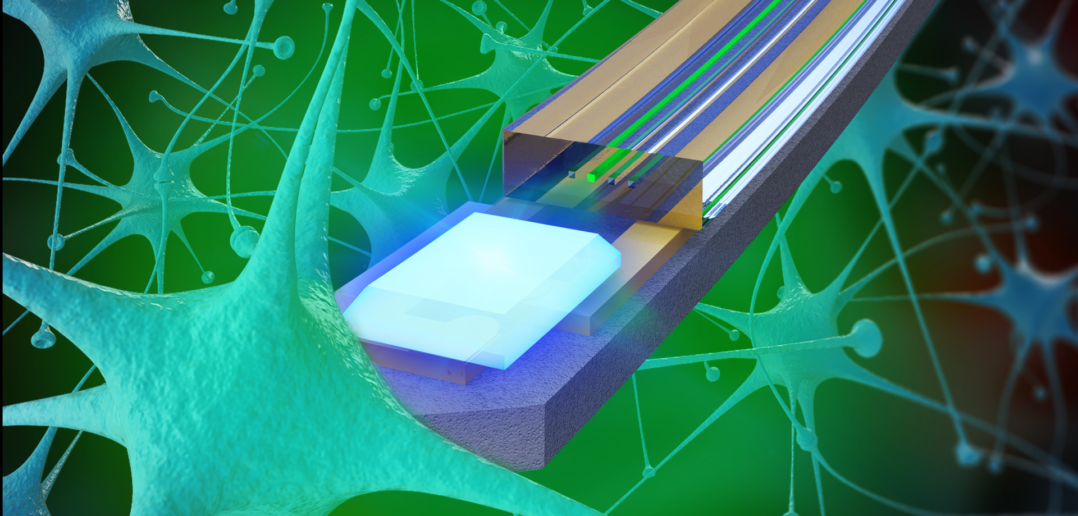
Northwestern scientists have developed a soft, wireless probe for studying the brains of mice using combined techniques of optogenetics and pharmacology, publishing a description of their systems and functional tests in the Proceedings of the National Academy of the Sciences (PNAS).
The device allows scientists to use light or chemical compounds to study the brain, and would be a vast improvement over the bulky, wired devices that are currently used in laboratories today, according to John Rogers, PhD, professor of Neurological Surgery and senior author of the study.

“There’s a combined level of novelty in the soft mechanics, the miniaturized dimensions and the wireless approaches for power delivery and control,” said Rogers, who is also a professor at the McCormick School of Engineering. “With these systems, a neuroscientist can deliver drugs and light to targeted locations in the brains of live, freely behaving animal models in a programmable, on-demand fashion — reaching far beyond capabilities provided by other technologies.”
Optogenetics is an experimental technique that has helped improve the understanding of brain circuits, Rogers said. Using genetically modified brain cells, scientists can trigger changes in the brain by shining LED light directly into cells, allowing scientists to measure alterations in neural activity that inform how the brain is wired to yield different types of behaviors.
This technique can also be used in conjunction with pharmacologic compounds, also delivered into the brain, that can replicate disease conditions or otherwise modify experiments. However, the bulky and wired designs of existing tools preclude studying the natural behavior of test subjects, according to Rogers.
Instead, the new device developed by Rogers and his colleagues is wireless, soft and highly miniaturized— smaller than a dime and lighter than a raindrop — which creates vast new options for experimental conditions in studies. The device also makes improvements on the delivery of chemical compounds, using soft micro-fluidic probes instead of the metal tubes used today.
“Studies of social interactions are particularly problematic with conventional tethered setups due to entanglements that inevitably occur,” Rogers said. “That’s no longer a problem.”
The investigators have also revamped how a scientist interact with these tools: the device is controlled through a graphical interface that runs on a desktop or laptop computer. Further, the device requires no battery or charging. Instead, the device is powered wirelessly through an NFC interface — the same protocol used to make card-less payments from a cell phone.
The result is a powerful new tool that can be used to further neurologic science, especially in determining how stimulation affects brain activity, according to Jelena Radulovic, MD, PhD, the Dunbar Professor in Bipolar Disease and a co-author of the study.
“We often apply different frequencies and intensities of optic stimulation to obtain desired effects, and these different stimulation protocols are likely to activate different neurotransmitter systems,” said Radulovic, who is a professor of Psychiatry and Behavioral Sciences, Pharmacology and Physiology. “By simultaneously infusing specific neurotransmitter antagonists, we can closer determine the neurochemical effects of a particular protocol and get closer to the mechanisms underlying different types of neuronal activation.”
This work was supported by the NIH Brain Research through Advancing Innovative Neurotechnologies (BRAIN) Initiative Grant R21EY027612A, National Institute of Mental Health (NIMH) Grants R01MH112355 and R41MH116525, NIMH Grants MH108837 and MH078064, and the National Institute on Drug Abuse (NIDA) Grant DA044121.
Read more:






